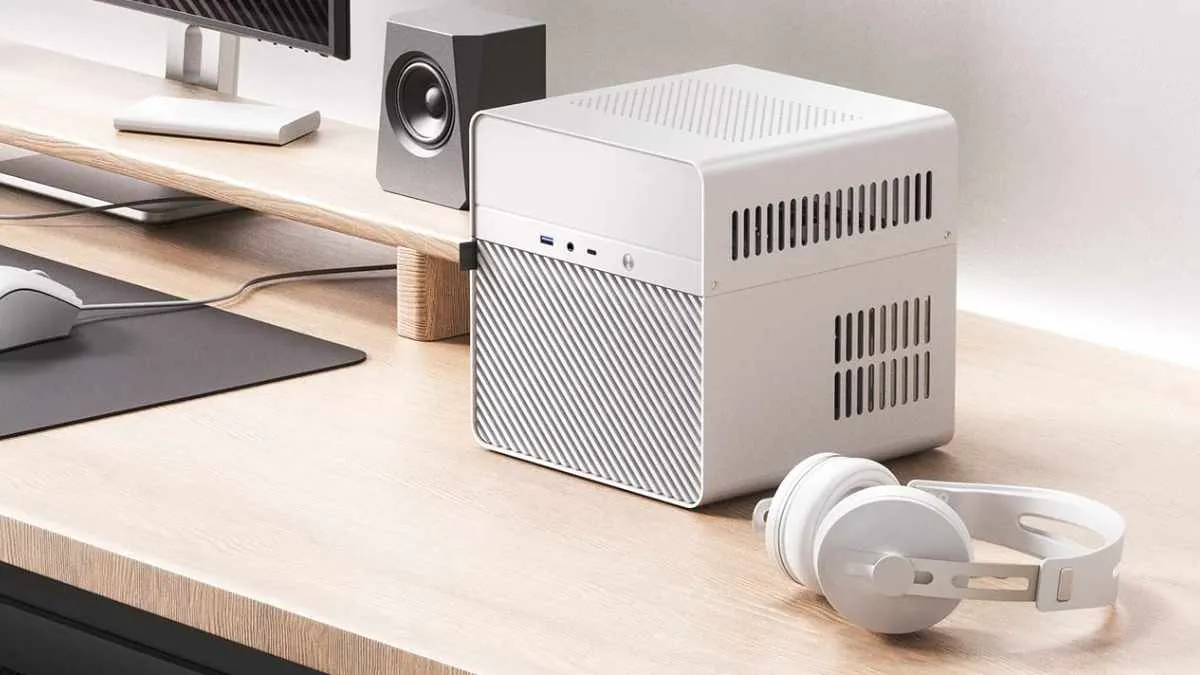Building my own NAS (Network-Attached Storage) system has been one of the most rewarding tech projects I’ve undertaken. This little powerhouse not only serves as a reliable home for my media library and photo backups but also acts as a hub for smart home automation and various Docker applications. Here’s a detailed look at how I designed, built, and configured my NAS to meet my needs.
The Hardware: A Perfect Balance of Power and Efficiency
For the heart of my NAS, I chose the ASROCK N100DC-ITX, featuring Intel’s efficient Quad-Core N100 processor. It’s an ideal choice for a low-power server that can handle multiple Docker containers and light virtualization without breaking a sweat.
Components:
- Case: A sleek, white Jonsbo N2 — compact yet spacious enough for all components.
- RAM: 8GB of DDR4 memory, more than sufficient for my current workload.
- Cache Drive: WD Red SN700 NVMe SSD (1 TB) for blazing-fast caching and application data.
- HDDs: A combination of two robust drives:
- HGST Ultrastar He8 8TB
- Seagate IronWolf 8TB
- Cooling: To ensure silent and efficient cooling, I installed a Noctua NF-A12x25 fan.
I run these drives in Parity with Unraid, which provides data redundancy. This ensures that even if one drive fails, no data is lost. It’s a peace-of-mind feature that’s essential for a reliable storage setup.
I also plan to upgrade to four 24TB HDDs in the future, which will significantly expand my storage capacity and allow me to consolidate my growing data needs.
Software: The Power of Unraid
I chose Unraid as the operating system for its flexibility and ease of use. Unraid allows me to combine drives of different sizes while ensuring data redundancy. Its web interface makes management a breeze, and its extensive plugin and Docker support opens the door to endless possibilities.
Key Features I’m Using:
- Plex Media Server: Streams movies, TV shows, and music to devices throughout my home.
- Immich: A self-hosted solution for managing my photo and video library.
- Home Assistant: Acts as the brain of my smart home.
Docker Containers: The Real MVPs
Docker containers are at the core of my NAS functionality. Here are some of the key containers I’ve set up:
- Plex Media Server: My go-to for organizing and streaming media.
- Immich: Handles photo backups and AI-driven photo organization.
- Home Assistant: Keeps my smart home devices running smoothly.
- DuckDNS: Ensures I can securely access my NAS from anywhere.
- Nginx Proxy Manager: Simplifies managing SSL certificates and proxy configurations.
- Tautulli: Provides detailed insights into Plex usage and activity.
Each container is configured with optimized volume mappings and ports, ensuring smooth operation and easy troubleshooting.
Use Cases: A Central Hub for Everything
My NAS has quickly become indispensable for several key tasks:
- Media Server: Plex streams my movies, TV shows, and music seamlessly to every device in my home.
- Photo Backup and Hosting: Immich keeps my growing photo library organized and accessible, complete with AI-driven tagging.
- Smart Home Integration: With Home Assistant, my NAS orchestrates lights, sensors, and automations for a smarter living experience.
- File Storage and Access: Acts as a central repository for personal files, ensuring everything is safely backed up.
- Experimentation: From trying out new Docker images to experimenting with virtual machines, my NAS is a playground for learning and innovation.
Challenges and Solutions
Building a NAS isn’t without its hurdles. Here are some challenges I faced and how I tackled them:
- Drive Noise: The solution? Carefully selecting low-noise components and tweaking fan curves to minimize noise during idle periods.
- Docker Configuration: With so many containers, managing network settings and volume mappings required careful planning.
- Storage Allocation: Balancing cache usage and long-term storage was tricky, but Unraid’s documentation helped clarify best practices.
Final Thoughts
This NAS project has been an exciting journey into the world of DIY home servers. It’s not just a tech experiment; it’s a vital part of my daily life, handling everything from entertainment to smart home management.
If you’re considering building your own NAS, I’d highly recommend diving in. The flexibility and control you gain are unmatched, and the satisfaction of creating a tailored solution is incredibly rewarding.
Got questions or want to share your own NAS build? Drop a comment below — I’d love to hear from you!
Happy building!
